Image above: Roger Savage painting in the deep valley around the ruins of structures associated with old East Light.
On September 23rd, 2005, Roger Savage arrived on Sable Island to spend ten days painting at various locations—some breezy and sunny, some windswept and overcast, often with sand blowing about.
Roger is a Nova Scotian artist, based in Liverpool. He studied art at Mount Allison University, New Brunswick. Many people are familiar with his watercolour paintings of the monumental granite forms of Cadden Bay, Port Joli, Nova Scotia. His field trips have taken him north for plein air renderings of glaciers and icebergs on Ellesmere and Devon islands, Nunavut, and south to paint the rich and dazzling colours of Colombian flora. His work has been exhibited internationally, and, in the Maritimes, his paintings are included in the permanent collections of public art galleries in Halifax, Charlottetown, Fredericton and Sackville. Roger is an elected member of the Royal Canadian Academy of Arts. (The Academy, founded in 1880, is an honourary organization of over 700 professional artists and designers from all regions of Canada.)
Roger Savage is an artist of the outdoors—inspired by light. He is intrigued by how light changes colours and shapes landscapes, and works outdoors—en plein air—to capture the spontaneity of Nature’s light and shadow. As fog rolls in or clouds blow over the landscape, patterns of light alter and shift. To work outdoors, where weather conditions can change rapidly, Roger uses watercolour on paper—media that enable fast work and response to changing light quality and intensity. Water-based tubed pigments permit a very loose and fluid approach with intense colours instantly.
West Light
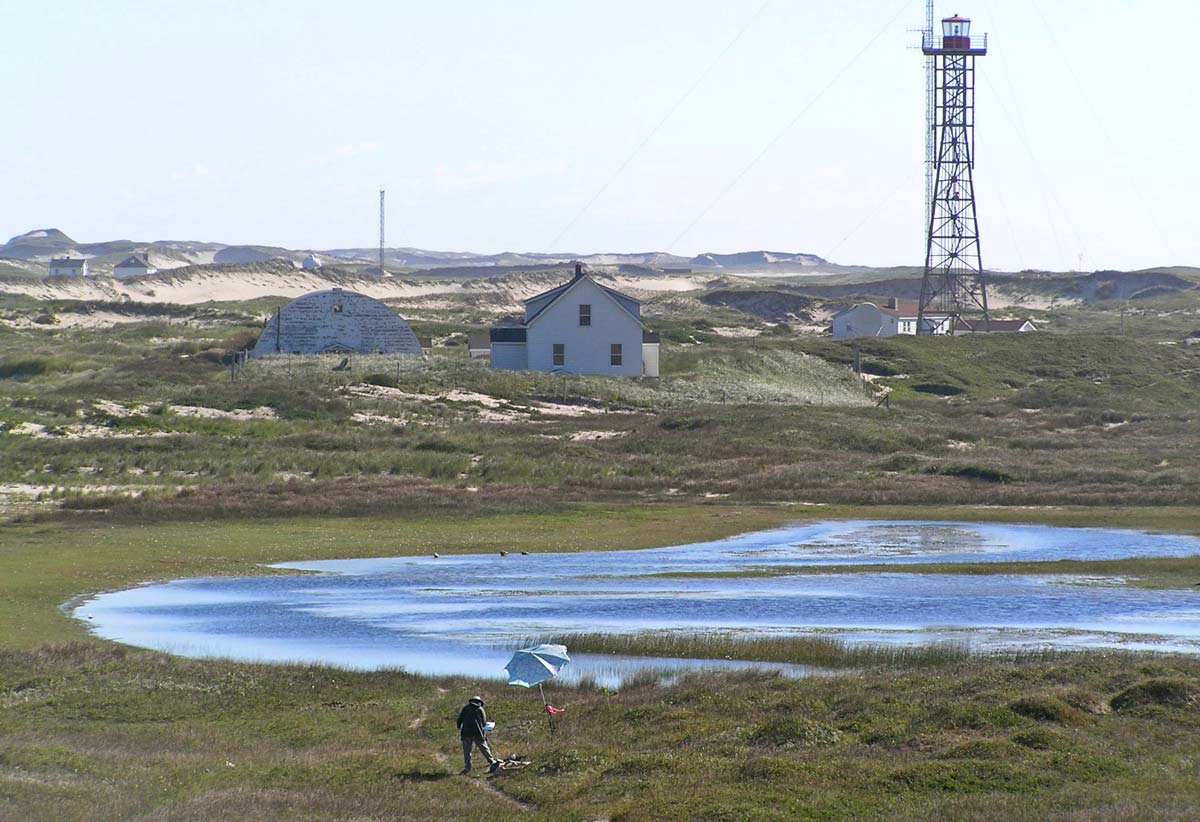 With an umbrella set up to shade his easel, Roger paints a West Light landscape, a view from the west end of Mummichog Pond. In the distance, behind a ridge of dunes, are some of the buildings at the meteorological station (as it was in 2005).
With an umbrella set up to shade his easel, Roger paints a West Light landscape, a view from the west end of Mummichog Pond. In the distance, behind a ridge of dunes, are some of the buildings at the meteorological station (as it was in 2005).
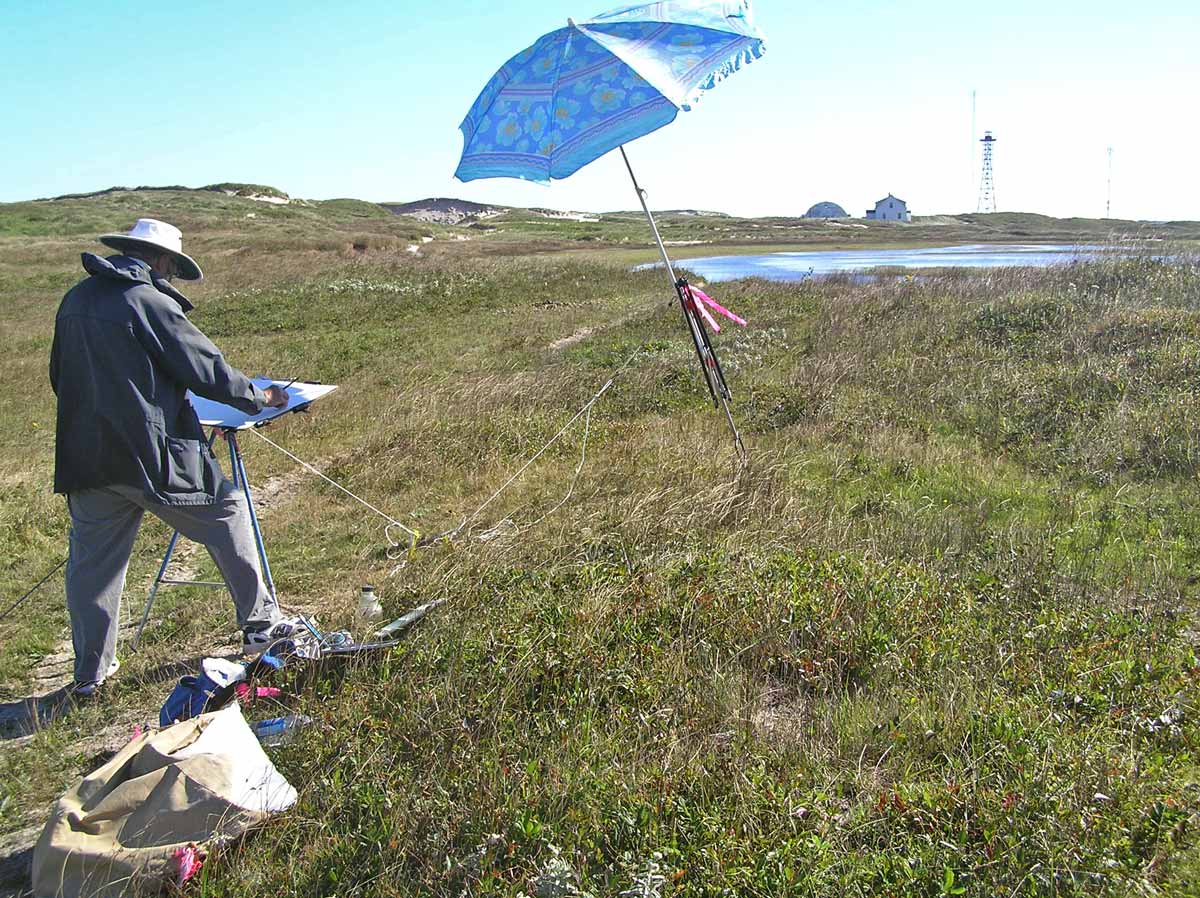
Sable Island Station
Roger also painted at the meteorological station where light and shadow on the mostly white buildings and the greens of early autumn gave shape to the landscape of the year-round human presence on Sable Island.
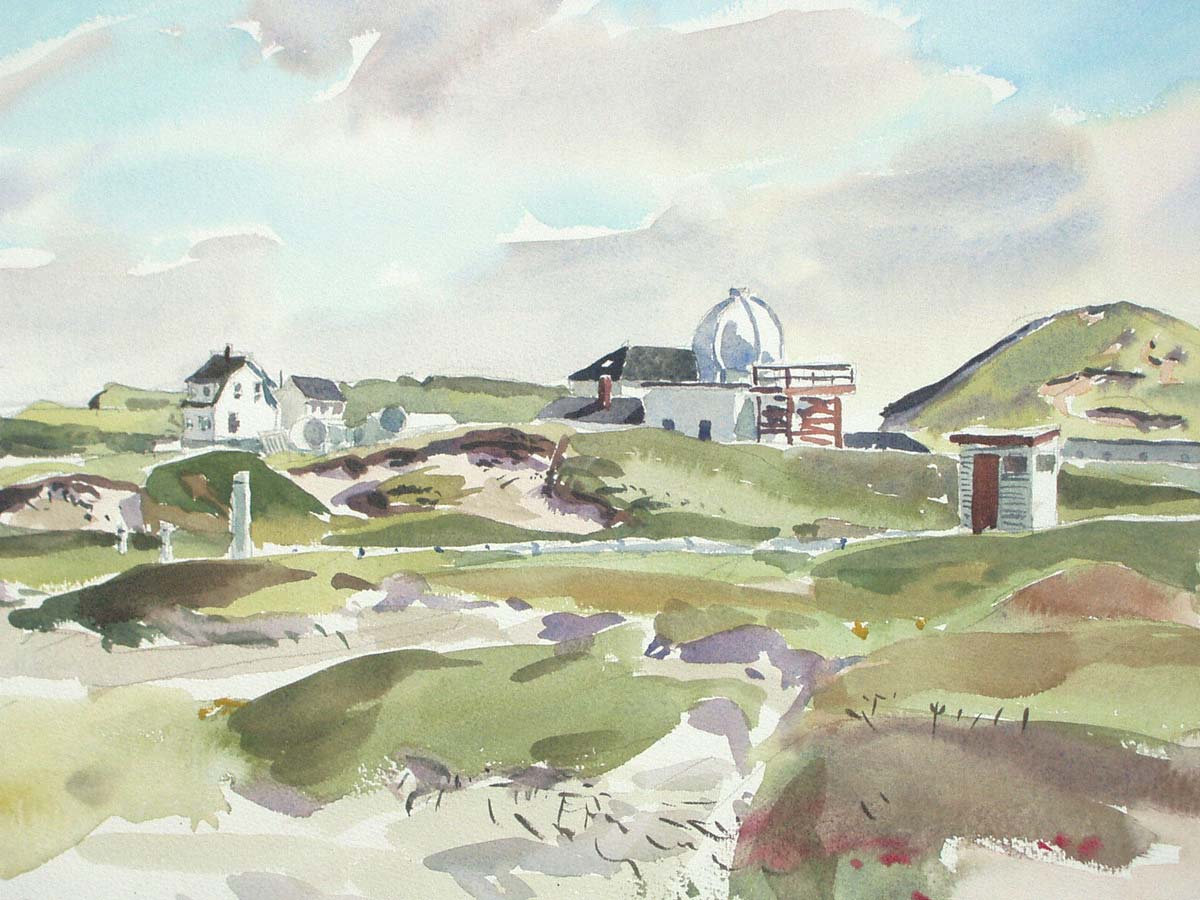
“Weather Station” CAR©C Roger Savage, R.C.A.
(watercolour/rag paper, painted on site, 30 x 40 cm, September 2005)
Looking towards the northeast, a view of the operations and accommodations buildings of the Meteorological Service of Canada in 2005. Also shown are two elements of the Magnetic Observatory (British Geological Survey) located at the station: the column enclosing the proton magnetometer and the unit housing the fluxgate theodolite.
East Light
 Roger Savage painting in the area of the long-ago abandoned light keeper’s house at East Light on Sable Island.
Roger Savage painting in the area of the long-ago abandoned light keeper’s house at East Light on Sable Island.
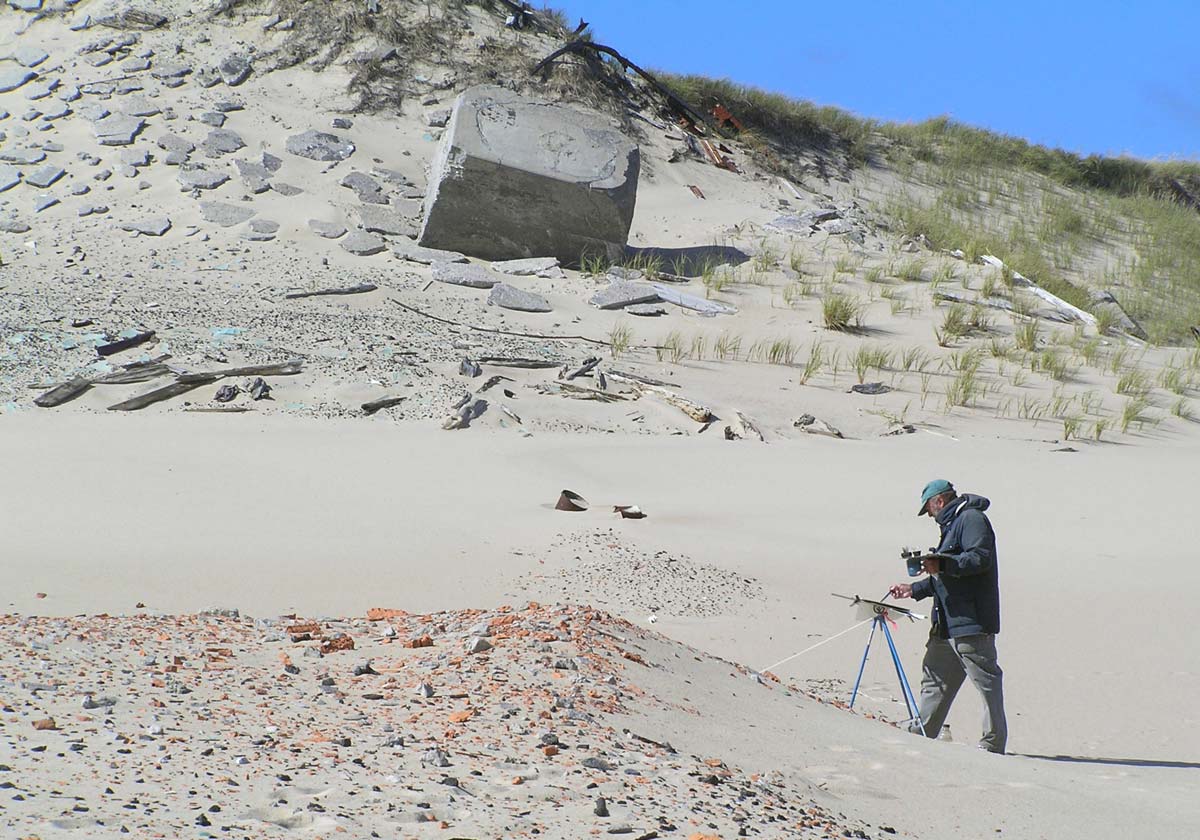 Tumbled and scattered steel, brick, concrete, glass and wood debris, the ruins of an earlier East Light tower.
Tumbled and scattered steel, brick, concrete, glass and wood debris, the ruins of an earlier East Light tower.
During several of his days on the island, Roger had to work at his easel in winds gusting to 25-30 knots. With his Polar experience, he was well-prepared to work in a windswept, isolated environment. Roger brought some of his Arctic gear to Sable Island, including clamps, ropes and tent pegs to secure and steady his palette and easel.
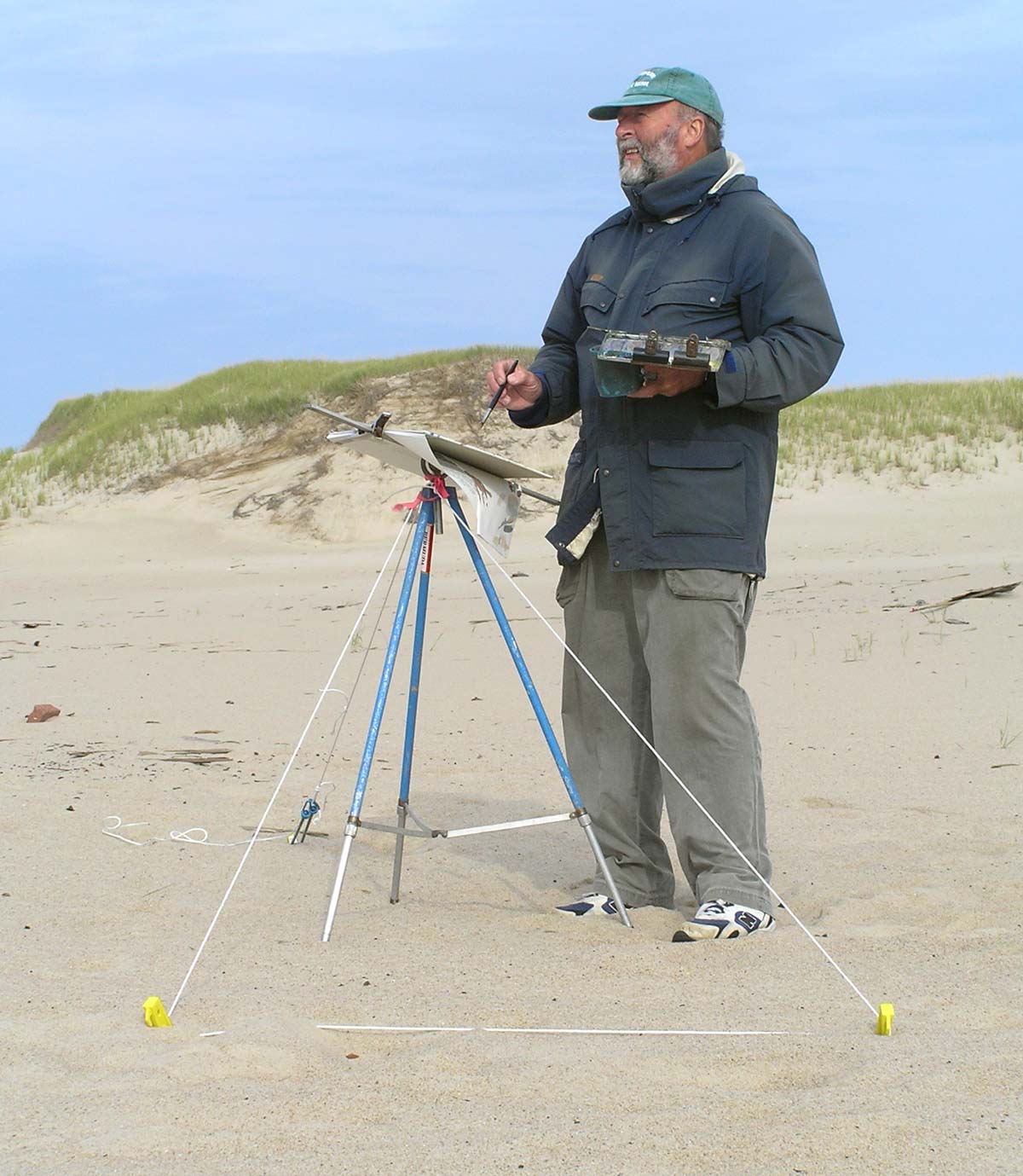
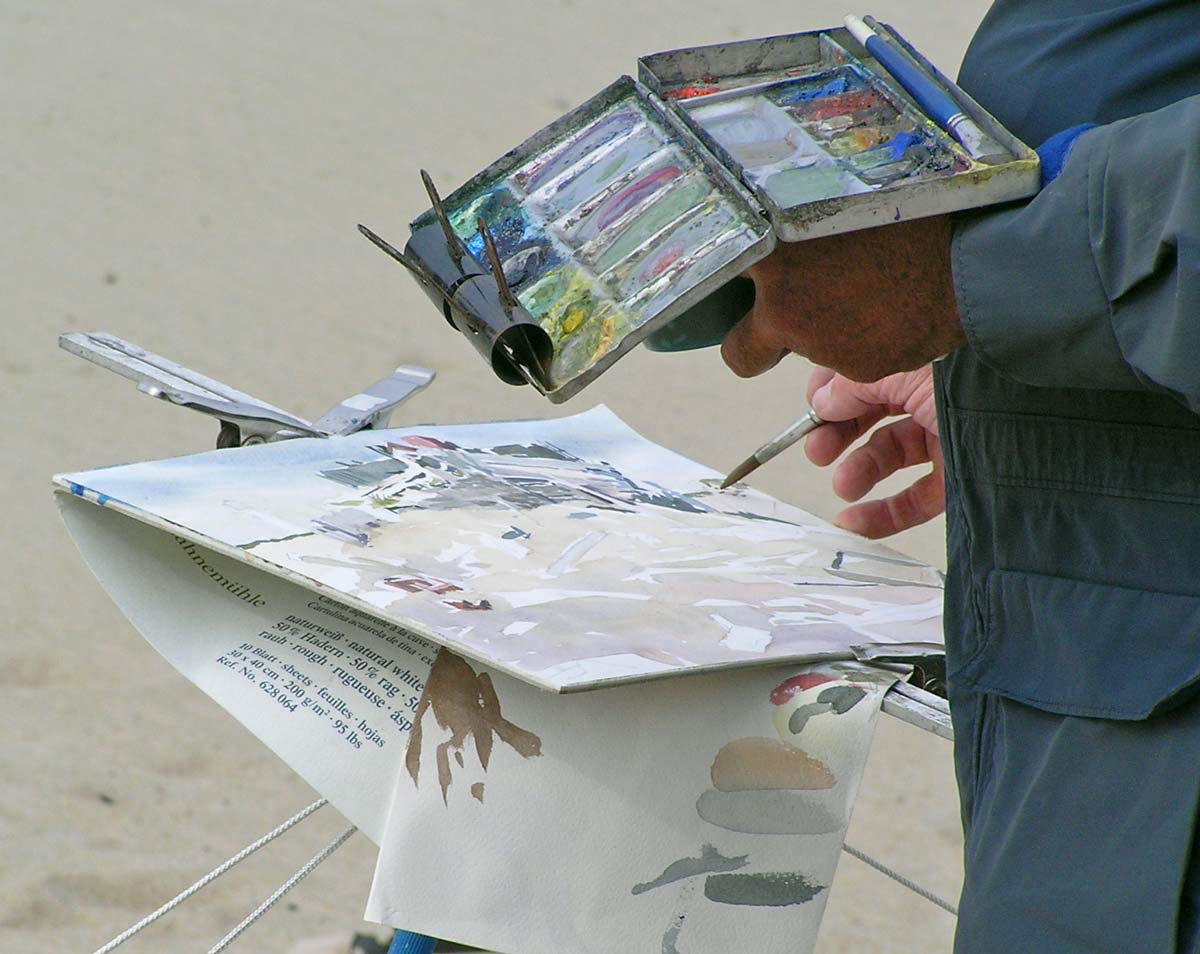 In some breezy locations, wind-blown sand grains adhered to the wet paint and paper and added a little fine texture to some of the artworks. Here, Roger is working on the painting shown below, “Derelict House, East Light”.
In some breezy locations, wind-blown sand grains adhered to the wet paint and paper and added a little fine texture to some of the artworks. Here, Roger is working on the painting shown below, “Derelict House, East Light”.
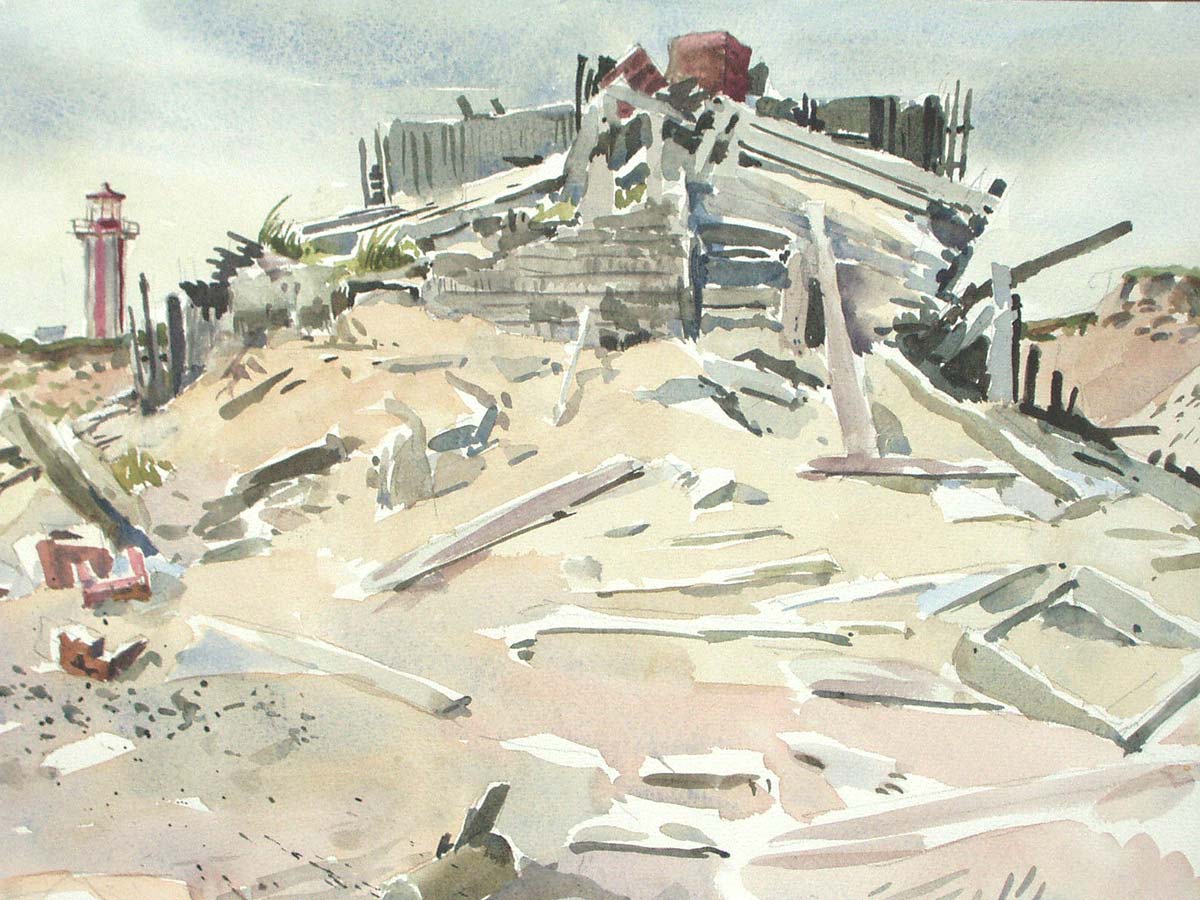
“Derelict House, East Light” CAR©C Roger Savage, R.C.A.
(watercolour/rag paper, painted on site, 30 x 40 cm, September 2005)
Ruins of the light keeper’s residence at East Light, with the light tower on the high dune in the background.
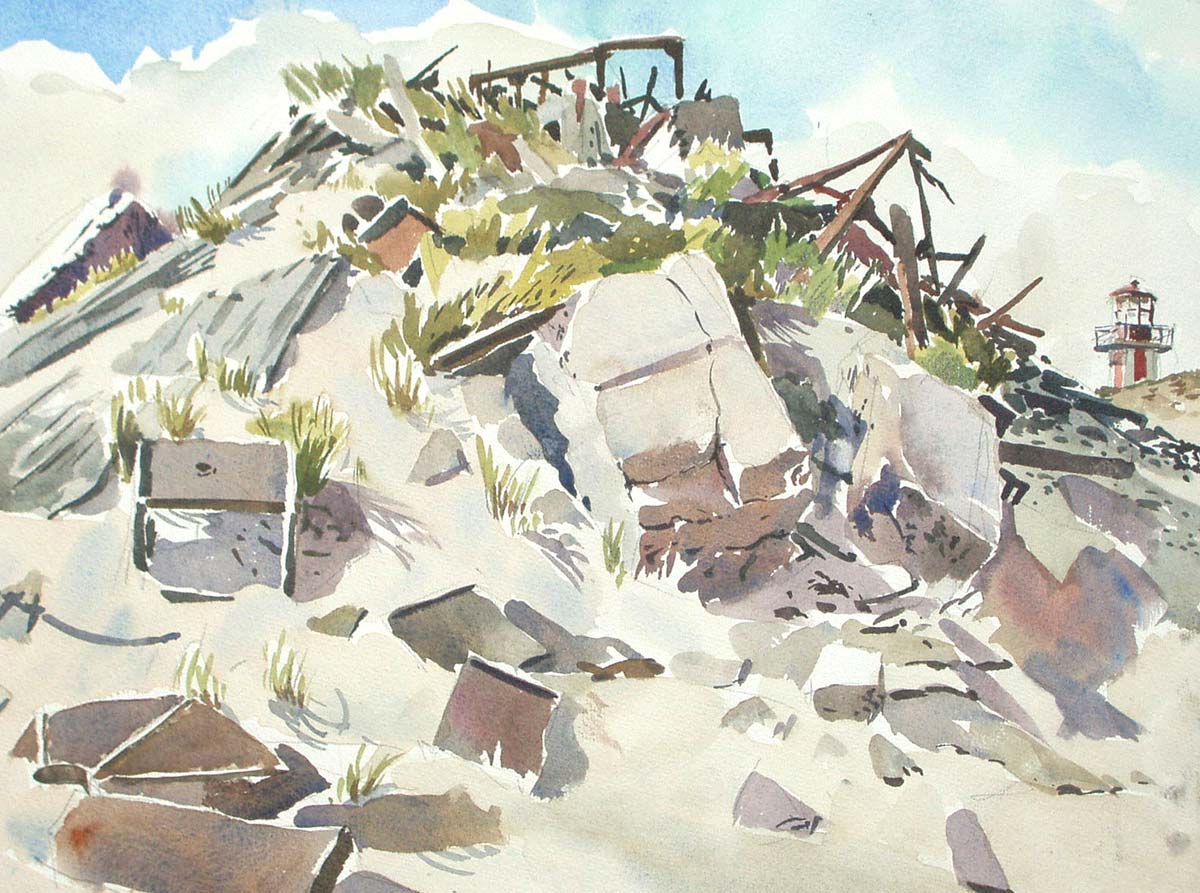
“Ruins of Old East Light” CAR©C Roger Savage, R.C.A.
(watercolour/rag paper, painted on site, 30 x 40 cm, September 2005)
Ruins of an earlier East Light tower, with the most recent (and last) light tower on the high dune in the background.
In 1991 Roger was a selected artist for the Polar Continental Shelf Project’s Arctic Awareness Program (Energy, Mines & Resources Canada). Supported by the Geological Survey of Canada’s summer field camps on Ellesmere and Devon Islands, he sketched and painted for two two-week periods in 1991 and 1992. For Roger Savage, the Arctic and Sable Island were in some ways similar—the sense of vast open space, and isolation. Being particularly inspired by the quality of light on big forms—the boulders of Cadden Bay or the dramatic sand dunes of Sable Island—he prefers painting into the light, with backlight defining the irregularity of topography.
Gallinule Pond
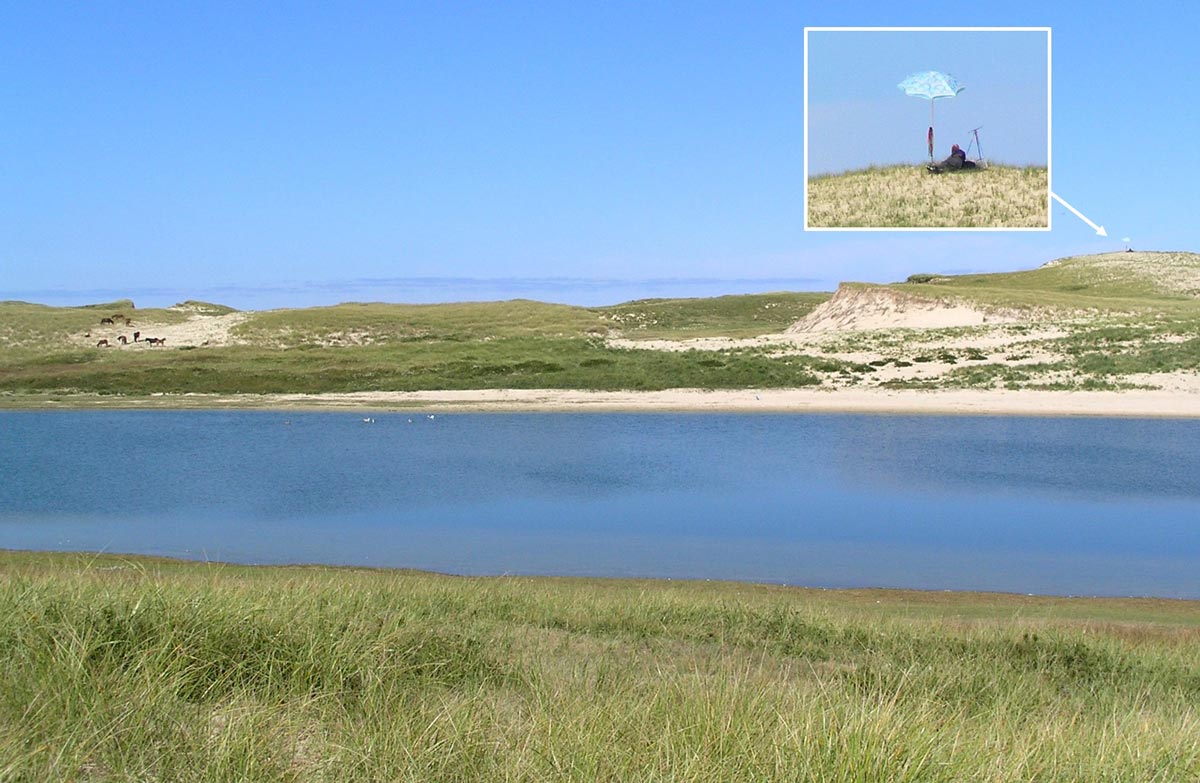 In the distance, on a hill overlooking Sable Island’s Gallinule Pond area, Roger set up his easel and umbrella, facing into the low-angle sun of early October. From this location he created the next painting,”Dunes and South Beach”.
In the distance, on a hill overlooking Sable Island’s Gallinule Pond area, Roger set up his easel and umbrella, facing into the low-angle sun of early October. From this location he created the next painting,”Dunes and South Beach”.
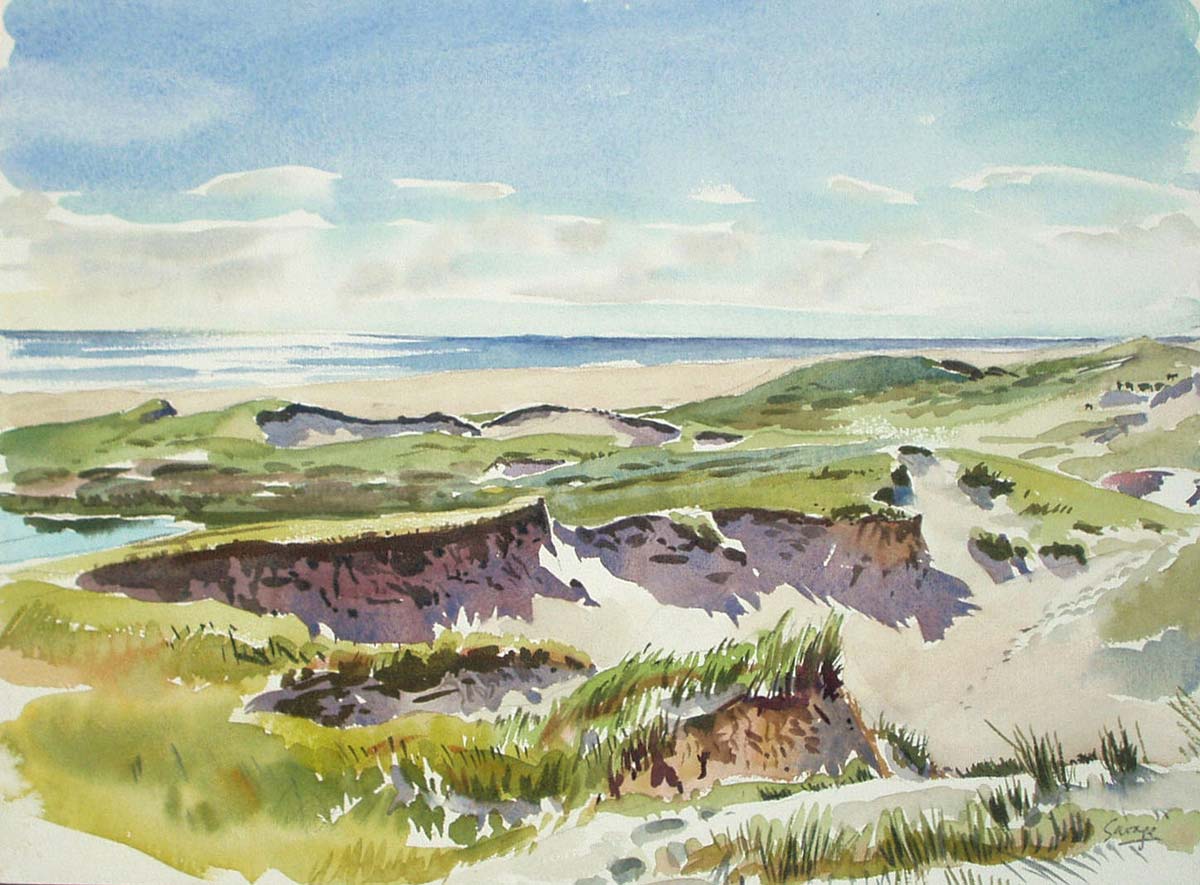
“Dunes and South Beach” CAR©C Roger Savage, R.C.A.
(watercolour/rag paper, painted on site, 30 x 40 cm, October 2005)
Landscape in the Gallinule Pond area—the west end of the freshwater pond is visible to the left in the scene.
Sable Island Horses

“Horses, Sable Island” CAR©C Roger Savage, R.C.A.
(watercolour/rag paper, 24 x 32 cm, October 2005)
A band of horses grazing in an area of marram grass and beach pea.

“Horse, Sable Island” CAR©C Roger Savage, R.C.A.
(watercolour/rag paper, 24 x 32 cm, October 2005)
Sable Island horse—a solitary stallion—investigating a pile of horse dung on the beach.
Zoe Lucas
Sable Island Institute, April 2019
An earlier version of this article was published in the Green Horse Society’s website in October 2005.
Plein Air Painting – Roger Savage
Roger Savage R.C.A.

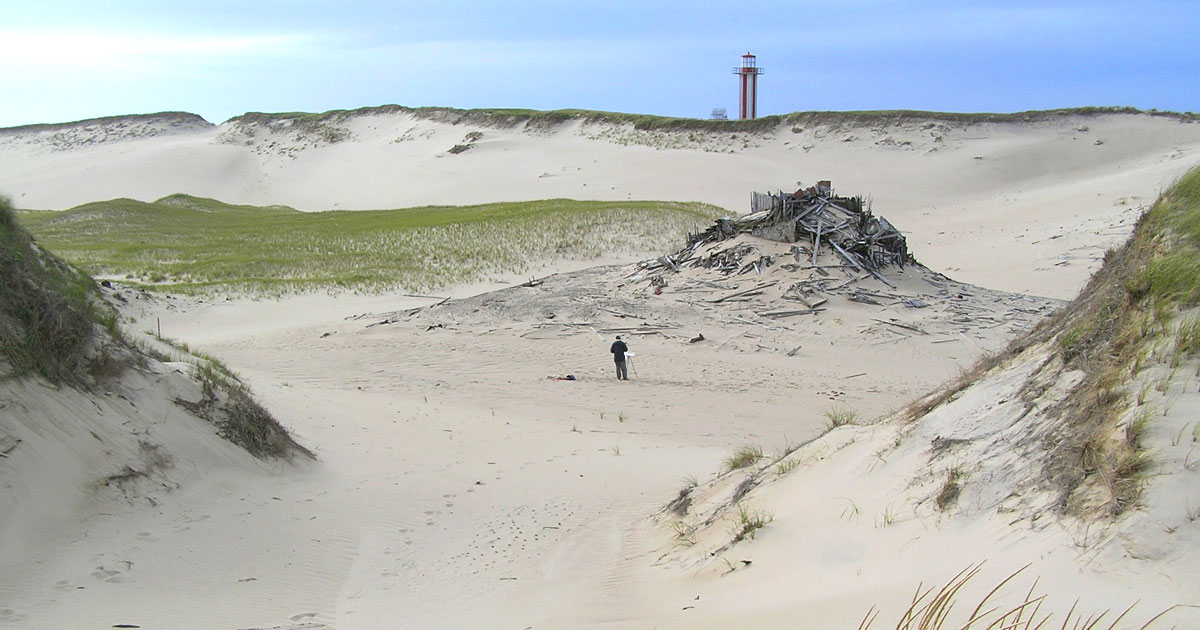

5 Responses
The art and photos are beautiful Roger.
Montreal Jimmy ;
Beautiful Master Roger,
You are unique.
Enjoy and make enjoy for ever your painting
Hug
Denise
Wonderful paintings of a great landscape.
Thanks for the great compilation. Thanks to Roger Savage!
Roger
Sable Island has always fascinated me. How lucky you were to spend some time there.
I like the derelict house picture.
Judi
Visited Roger in his studio yesterday. He was well and very busy. Looking at these WC by Roger Savage , just so impressed at what a Master watwercolorist painter Roger is. Well 50 years at the easel is a miraculous thing. Yes l too found the derelict house my favorite. Its not your typical subject for a painting.